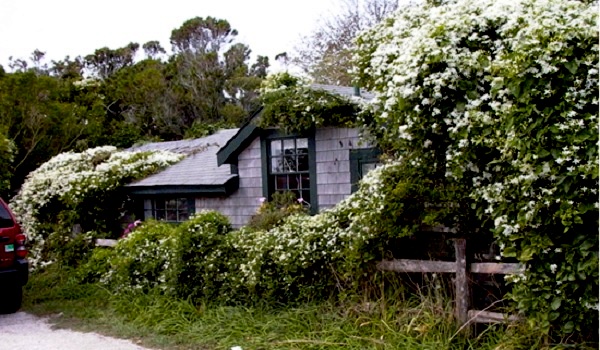Garden: Watch Out for These Invasive Plants
Cary, NC — Watch out for these invasive plants–they just might take over your yard!
Invasive Plants
Summer is officially here, and, while it’s a tough time to plant new plants or to do any major adjustments to your landscape, it is a great time to review how some plants are performing in your yard. Do they look healthy? Are they happy, and are they well behaved? Have the good-looking plants you planted a few years ago become “yard bullies?”
Don’t Let Pretty Plants Fool You
Often, we see a plant that seems so perfect that you don’t even think about what it may become in a year or two. I made that mistake with the sweet-smelling, wonderfully-growing Sweet Autumn Clematis. My neighbor had it planted at her mailbox, and I was so impressed with the fragrance and how well it bloomed all summer that I asked for a clipping to grow my own.
How sorry I was three years later! Sweet Autumn Clematis is very invasive, and it spread all over my garden beds and into the lawn. It’s been years, and I am still trying to kill it!
I was also very happy to accept quite a few Liriope from a friend to create a nice border for my walkway. It did well for a few years, and then I noticed it creeping into the lawn…again and again and again. Even digging it up didn’t control it. What I had planted was Creeping Lilyturf, or Liriope spicata, which has a tendency of aggressive spreading and makes it an unsuitable border plant.
This species has even been observed to establish rhizomes beneath concrete borders, and you can’t dig that up! Creeping Lilyturf is good for steep slopes where erosion control is needed.
What I should have planted was Muscari Liriope or Liriope Muscari, which doesn’t spread. It pays to ask the experts and to think long-term about any plant you may put in your yard.
Watch Out for These Plants
Below, I have listed just a few common hard-to-manage plants that are popular for our area. If you are not able to monitor their growth, I would suggest you stay away from these, even if your favorite aunt wants to give them to you.
Sweet Autumn Clematis (Clematis paniculata)
Wisteria (Wisteria sinensis)
Purple Perilla (Perilla frutescens)
Wild Violets (Viola papilionacea)
Mint (Mentha)
Bishops Weed or Chameleon Plant, Houthuyma cordata)
Creeping Lilyturf (Liriope spicata)
Japanese honeysuckle (Lonicera japonica)
multiflora rose (Rosa multiflora)
Chinese privet (Ligustrum sinense)
Bamboo (Arundinaria)
Find even more information about invasive plants online.
Mel’s Tip of the Month
Pull your weeds after it rains, when it’s easier to get the whole root and to get rid of the plant for good. Happy Gardening!
——————————————————————————————————————————–
Melody Hughes is a North Carolina State Extension Master Gardener Volunteer and a real estate agent at Dunlap Lilley Properties, Inc. Special thanks to Master Gardeners Helen Bahr and Josie Cozart for their expert advice.
——————————————————————————————————————————–
The gardening column is sponsored in part by Garden Supply Co. on Old Apex Road in Cary.




I’m letting the creeping liriope that came with the house duke it out with the wild violets. Rather a pretty battle and my lilies seem to have a better chance against the rabbits hiding under the other plants. Not disagreeing that they are invasive, because they are. Chameleon plant (Houttuynia cordata)is in there, too, and my husband cannot tolerate the smell of it, so concentrating my efforts on killing that. Wish me luck.
Loved this story, and the personal experience. We once planted Pennyroyal, not realising it was a member of the Mint family. Jumped the pot and grew roots even under our driveway where it became part of our side lawn for a while. Smelled great when we mowed til we finally managed to kill it!